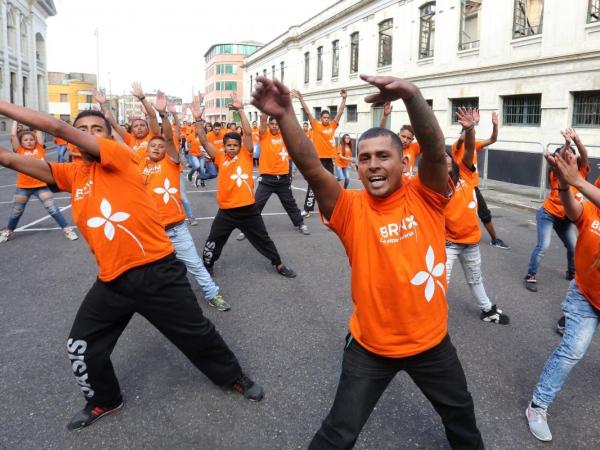“The orange economy is a concept that we have been trying to understand for four years and still do not understand”. With this phrase, Daniel Rojas, a member who led Gustavo Petro’s splicing committee, announced that this policy, one of the flags of the Government of President Iván Duque, will not continue.
The initiative that sought for the creative industries to become an economic engine for the country is among the policies “in red” in the final report of the splicing process that began five weeks ago.
(Orange economy: 2.61% of GDP despite investment of $24 billion).
For the president-elect’s team, this policy is still ambiguous and difficult to understand, which is why it will no longer be used in the next government, as it is known.
In front of the ad the outgoing Minister of Culture, Angélica Mayolo stated that it is an inconvenient decisionsince the programs and instruments of the Orange Economy policy have promoted new jobs and greater investment for the sector in recent years.
“Eliminating the incentives generated by the Orange Economy Policy such as: the CINA, exempt income and Cocrea would be a big mistake. All these instruments have promoted new jobs and increased investment for the sector in recent years. The numbers speak for themselves”, Minister Mayolo wrote in a thread on Twitter after the presentation of the final report of the joint.
Eliminating the incentives generated by the Orange Economy Policy such as: the CINA, exempt income and Cocrea would be a big mistake. All these instruments have promoted new jobs and the largest investment for the sector in recent years. The figures speak for themselves (I open ?)
– Angelica Mayolo (@mayoloangelica) August 1, 2022
In addition, he invited to analyze the impact of these instruments. “Beyond the concept, let’s review the results. What works and generates benefits should be strengthened and not finished”, added the head of the portfolio.
YOUR IMPACT
Following the implementation of this policy, Dane designed a satellite account to measure the contribution of the creative industries sector to the economy, which in 2021 it represented 2.61% of the gross domestic product (GDP), that is, a little more than $27.75 billion.
This share has remained relatively constant in recent years: 3% of GDP in 2019 ($28.78 for that year), and in 2020, the year of the pandemic, it reached 2.64% ($23.90 billion).
THE SUBSECTORS
According to a recent general report from Portafolio, the latest report from the satellite account on culture and orange economy showed that the subsector with the highest participation in 2021 was functional creations, with 51.3% of the added value and a contribution of $14.2 billion. In this, the segments of digital media and software stand out, these being the most important in the sector with $8.9 billion; design and advertising.
(Orange economy exports grow 29.2%).
The arts and heritage contributed $7.6 billion, 27.7% of the added value. They include the visual arts, performing arts, heritage, manufacturing activities of the orange economy, and cultural tourism, among other activities.
While in the cultural industries, on the other hand, there are the publishing, phonographic, audiovisual segments, and news agencies and other information services. These activities contributed $5.82 trillion in 2021 to the economy.
According to the Ministry of Culture, this Government mobilized resources for more than $24 billion for the sector, in order to strengthen the cultural and creative industries in the country. Among the advances that the portfolio highlights is the creation of the Orange Development Areas, spaces within cities and municipalities where cultural and creative activities converge with an economic boost approach. The country has 95 areas in 50 municipalities.
(Colombia will receive loans for orange economy and climate action).
In addition, Mincultura highlights measures such as exempt income for orange economy companies (dedicated to cultural, creative and technology-based activities) It has benefited 1,098 entrepreneurs and businessmen.
EMPLOYMENT IN THE SECTOR
According to official statistics, the number of employed people in culture and the orange economy (600,918) grew by 11.3% in 2021. This, due to the increase in the employed population in the three areas: cultural industries (17.0%), arts and heritage (12.5%) and functional creations (8.2%).
On the other hand, an offer of 503,096 jobs was registered in 2021, a growth of 20.2% compared to 2020. Arts and heritage offered 228,829 places and functional creations 205,883.
BRIEFCASE







